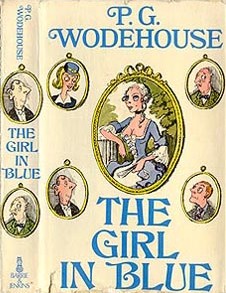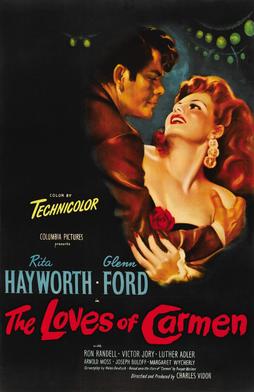
The Wicked Lady is a 1945 British costume drama film directed by Leslie Arliss and starring Margaret Lockwood in the title role as a nobleman's wife who becomes a highwaywoman for the excitement. The film had one of the largest audiences for a film of its period, 18.4 million.

The Pleasure Garden is a 1926 British–German silent drama film directed by Alfred Hitchcock in his feature film directorial debut. Based on the 1923 novel of the same name by Oliver Sandys, the film is about two chorus girls at the Pleasure Garden Theatre in London and their troubled relationships.

Daughter of Fortune is a novel by Isabel Allende, and was chosen as an Oprah's Book Club selection in February 2000. It was published first in Spanish by Plaza & Janés in 1998. Isabel Allende says "of her female protagonist in Daughter of Fortune, Eliza, that she might well represent who the author might have been in another life." "Allende spent seven years of research on this, her fifth novel, which she says is a story of a young woman's search for self-knowledge." "Allende also believes that the novel reflects her own struggle to define the role of feminism in her life." Allende also wrote a sequel to Daughter of Fortune entitled Portrait in Sepia which follows Eliza Sommers' granddaughter.

The Girl in Blue is a novel by P. G. Wodehouse. It was first published in the United Kingdom on 29 October 1970 by Barrie & Jenkins, London, and in the United States on 22 February 1971 by Simon & Schuster, Inc., New York.

The Loves of Carmen is a 1948 American adventure drama romance film directed by Charles Vidor. The film stars Rita Hayworth as the gypsy Carmen and Glenn Ford as her doomed lover Don José.

Jean Kent, born Joan Mildred Field was an English film and television actress.

The Miracle is a 1959 American historical fiction film directed by Irving Rapper and starring Carroll Baker and Roger Moore. It is a remake of the 1912 hand-colored, black-and-white film The Miracle, which was in turn a production of the 1911 pantomime play, The Miracle, written by Karl Vollmöller and directed by Max Reinhardt.

The Hills of Varna is a children's historical novel by Geoffrey Trease, published in 1948. It is an adventure story based on the revival of classical scholarship in the Renaissance.

Fanny by Gaslight is a 1944 British drama film, directed by Anthony Asquith and produced by Gainsborough Pictures, set in the 1870s and adapted from a 1940 novel by Michael Sadleir.
Edward Black was a British film producer, best known for being head of production at Gainsborough Studios in the late 1930s and early 1940s, during which time he oversaw production of the Gainsborough melodramas. He also produced such classic films as The Lady Vanishes (1938).

Jassy is a 1947 British colour film historical melodrama set in the early 19th century, based on a novel by Norah Lofts. It is a Gainsborough melodrama, the only one to be made in Technicolor. It was the last "official" Gainsborough melodrama.

Caravan is a 1946 British black-and-white drama film directed by Arthur Crabtree. It was one of the Gainsborough melodramas and is based on the 1942 novel Caravan by Eleanor Smith.

Lady Eleanor Furneaux Smith was an English writer and active member of the Bright Young Things.
The Gainsborough melodramas were a sequence of films produced by the British film studio Gainsborough Pictures between 1943 and 1947 that conformed to a melodramatic style. The melodramas were not a film series but an unrelated sequence of films that had similar themes that were usually developed by the same film crew and frequently recurring actors who played similar characters in each. They were mostly based on popular books by female novelists and they encompassed costume dramas, such as The Man in Grey (1943) and The Wicked Lady (1945), and modern-dress dramas, such as Love Story (1944) and They Were Sisters (1945). The popularity of the films with audiences peaked mid-1940s when cinema audiences consisted primarily of women. The influence of the films led to other British producers releasing similarly themed works, such as The Seventh Veil (1945), Pink String and Sealing Wax (1945), Hungry Hill (1947), The White Unicorn (1947), Idol of Paris (1948), and The Reluctant Widow (1950) and often with the talent that made Gainsborough melodramas successful.

Novelas ejemplares is a series of twelve novellas that follow the model established in Italy. The series was written by Miguel de Cervantes between 1590 and 1612 and printed in Madrid in 1613 by Juan de la Cuesta. Novelas ejemplares followed the publication of the first part of Don Quixote. The novellas were well received.

The Boy in Blue is a 1919 silent German drama film directed by F. W. Murnau. It was Murnau's directorial debut. The film is now considered to be a lost film, though the Deutsche Kinemathek film archive possesses 35 small fragments ranging from two to eleven frames in length.

The Man in Grey was a novel by the British writer Lady Eleanor Smith first published in 1941. It was a melodrama set in Regency Britain. A young woman unhappily married to a cold aristocrat falls in love with a strolling actor, but her hopes of eloping to happiness are wrecked by an old school friend who murders her in order to be able to marry her husband.

The Girl from Montmartre is a 1926 American silent romantic drama film directed by Alfred E. Green and starring Barbara La Marr in her last film role. It was distributed through First National on the day after La Marr died.
Maurice Ostrer was a British film executive. He was best known for overseeing the Gainsborough melodramas. He was head of production at Gainsborough Studios from 1943–46. He resigned from the studio in 1946 after a disagreement with J. Arthur Rank, who had taken over the studio. Ostrer left the film industry and went to work in textiles.
















